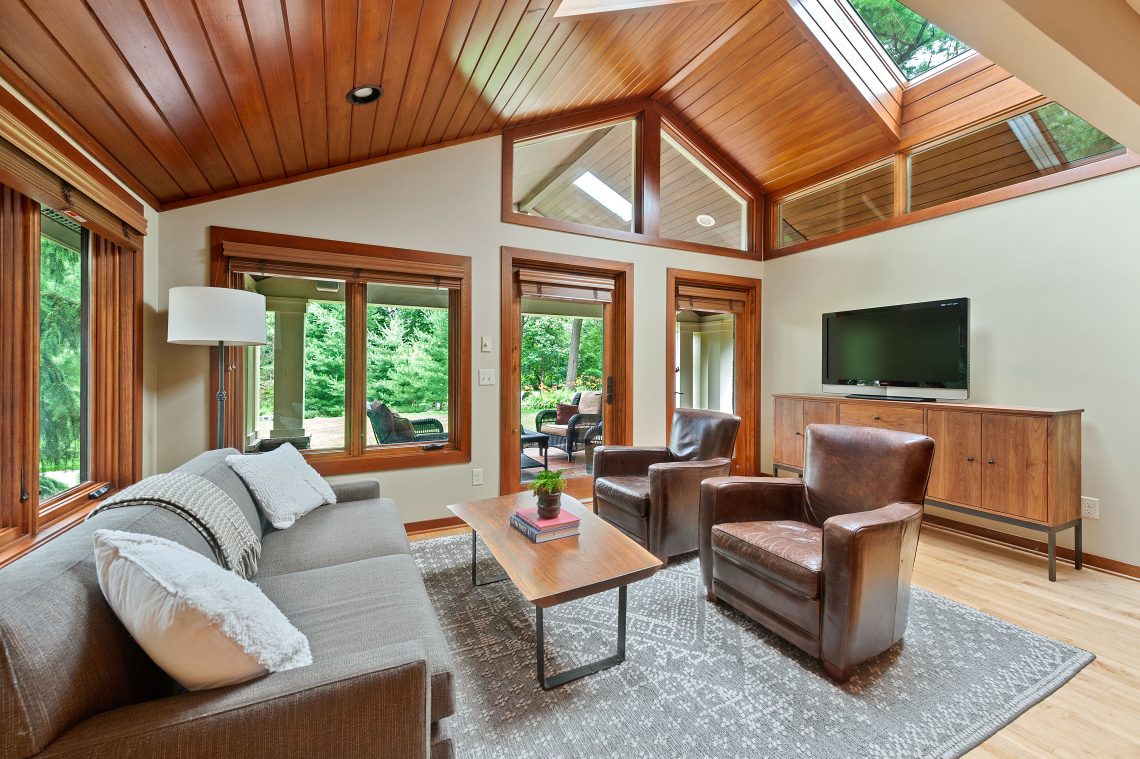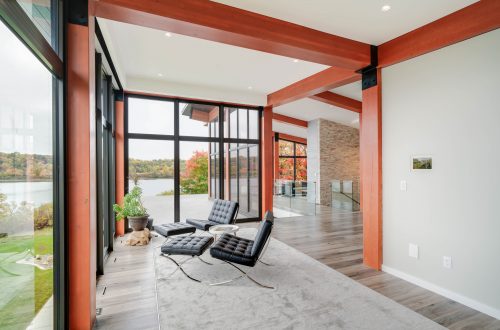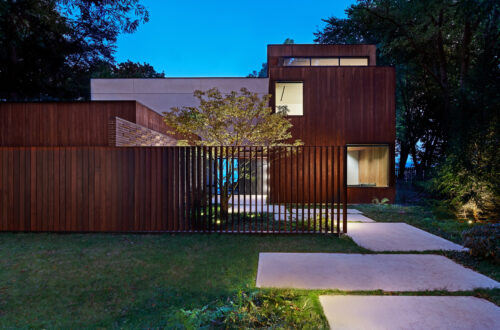Photography has been an important tool in documenting the human experience since early experiments in the heliograph and daguerreotype captivated both innovator and subject alike nearly two centuries ago. It is an art and practice in visual communication; both objective and subjective in recording the cultural, social, and natural world.
It is a craft that is arguably one of the most significant inventions since the printing press, with genres and artistic styles that run the gamut from objective photo-journalism and montage portraiture to abstract landscapes and naturalistic architecture.
Great Lakes By Design Magazine spoke with some of the photographers in the region to learn more about their work, inspiration, and design process.
Julia Auerbach | Julia Auerbach Photography
Minneapolis- St. Paul, Minnesota
Julia Auerbach is a tenured architectural photographer based out of Minnesota and has been involved in interior design since she was 18-years-old. Auerbach holds a degree in the fine arts and has developed a robust portfolio of shoots ranging from architecture and portrait to nature.
Great Lakes By Design: Tell me a little more about the work you do.
Auerbach: I do mostly architecture now, but I used to do wedding and portraits. I have my degree in fine arts, so I do a lot of wildlife photography on my own in northern Minnesota. I count pictures of wildlife as a fine art.
What are some of the things you consider when shooting architecture?
Auerbach: You have to consider negative space. If you see a blank wall [during a shoot], you are either going to want to find something to put on the blank wall or move away from it. If you’re doing portrait, you can move your subject anywhere; the backdrop is what you get.
You have to consider weather and lighting, and when you are doing architecture you’re dealing more with lines. A lot of [architectural photography] is fixing lines when you’re in post-processing. You want to make sure they’re straight. For me, I use a lot of widening lenses to get a bold look.
How do you see design in your work? In photography?
Auerbach: I think of the architectural aspect of a space. I shot this house that was very gables-and-retreat-looking. The rooms had these funky windows and engraved, wood ceilings that added more interest to the space. It became more like a painting. When you have texture in a room, it really helps to have vegetation in the room; it helps it come alive.
Whenever I’m photographing luxury apartments for construction companies, I especially love the lobbies. There is always really good symmetry.
How is your view of a subject unique?
Auerbach: When I see a bedroom where the bedspread and pillows are perfectly set, I want to jump on it and rip it apart. I think because I have more of an arts background, I think a lot of photography can be very technical. I look for the soul of a room—I can read a room very well. I’ll just know.
I worked with studio a lot and a background in art really helps with composition, balance, and color. I’ve also been looking at interior design magazines since I was 18-years-old. I was crazy about them.
I’ve been reading a book called “The War of Art” and it talks about zones of excellence and zones of genius. I’d say I’m in my zone of excellence when I’m doing portraits, but I’m in my zone of genius when I do architecture, because it comes easy.
What has been one of your favorite subjects and why?
Auerbach: I really like the style of mixing mid-century modern with furniture that has a sparser quality. I did one for the Atomic Ranch magazine—the couple were stylists, so obviously their space would look fabulous too. The front of the house had a floor-to-ceiling glass window and a deck up front. Their place was easy to shoot, because the house had great bones.
I like places that are tucked into the woods with greenery around them, so you have that element of nature surrounding you to bring a sense of calmness. I also notice people don’t realize how important it is to have comfortable couch or comfortable chair. Provide that for yourself.
Do any other photographers influence your work? Designers?
Auerbach: I’ve probably paid more attention to interior designers, because they’re the ones making the space look good. I don’t know though, I’ve done so much; I’ve met too many people.
One of my favorite photographers is Jim Brandenburg. He was a famous National Geographic photographer from Minnesota. His fine art of nature is unbelievable. He’s always been an inspiration and he’s my kindred spirit. You tend to think, ‘does this guy know how to talk to creatures?’ He has a picture where there’s a rabbit holding a stick like an old man. [The animals he captures] do stuff like—how do you capture that? Sometimes you have to take 1,000 photos to get the right shot.
Has your diverse portfolio informed your work with architecture? If so, how?
Auerbach: It’s all different. With portraits, it’s usually a huge company or 35 people and there is always the head guy or the lawyer with his ‘I’m cool’ look.
The bottom line is when my back is to the light and the subject is in front of me, I look for that light whenever or wherever I am. That’s the hardest part for me—trying to get the right light is the worst.
I’ve had my share of photographing people and pleasing people, but when I do a room, the room accepts itself and what it looks like—all I have to do is bring out its beauty. There isn’t fickleness to a space.
What does design mean to you?
Auerbach: Design is about putting your heart and soul into your art. When we do this, beauty reveals itself. It also means getting the size, proportions, dimension, and angles right in a space.
Text: R. Collins, Tyler Fleser, R.J. Weick
Vist Julia Auerbach Photography to find out more






